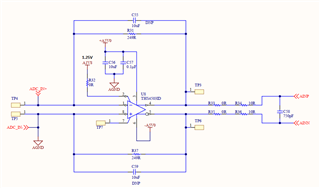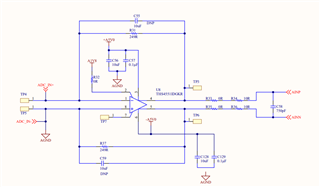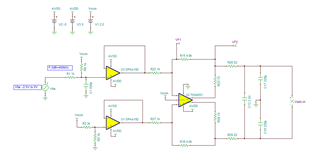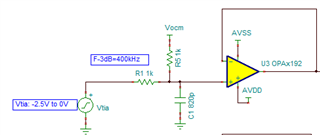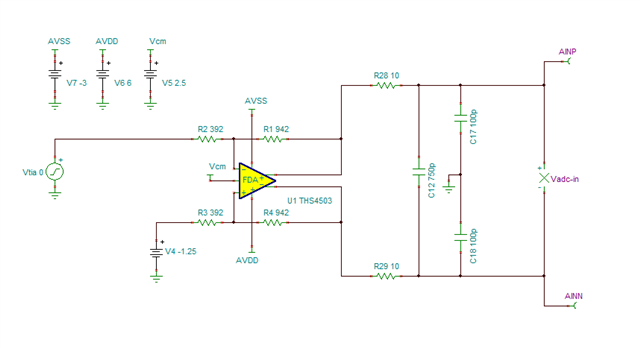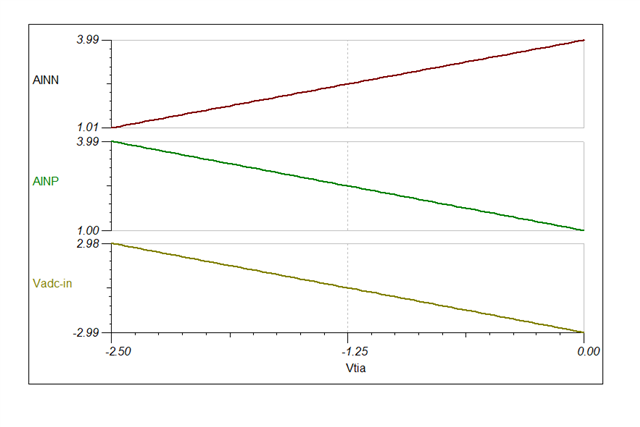Other Parts Discussed in Thread: THS4503, THS4551
Hi Texas,
I want to measure the precision voltage (Transimpedance amplifier output voltage, 10kHz-400KHz) with a minimum resolution of 400 uV from the ADS1675. We implemented the attached schematic on PCB (ADS1675REF Eval board) with THS4503 FDA; however, we are not getting desired resolution (30 mV oscillations we are getting). Could you please correct and modify the following points for the next PCB design to achieve a minimum noise floor with ADS1675?
- Since the Total output noise from TIA Opamp (Low pass filter at the output node) is 1uV to 2.5 uV. The output of TIA is in the negative range of -2.5 to 0 volts with a stable frequency range of 10kHZ to 400 kHz on various frequency gains. How should we effectively cascade the TIA single-ended signal with FDA (THS4503 or THS4551) to preserve maximum signal fidelity?
- Should we use a unity gain inverting buffer between TIA and FDA to minimise the level floor? Will it be fine to use Vocm of FDA to level shift the negative single-ended TIA output signal to feed to unipolar differential ADC i.e., ADS1675?
- What modifications (not at the cost of signal distortion/loss, noise increment) should we make in the FDA design to utilise the full range of ADS1675 here? TIA output: -2.5 to 0 volt, VrefADC: 3V, AVDD_ADC: 5V.
- ADS1675 datasheet says (“A 750pF capacitor should be used directly across the analog input pins, AINP and AINN”), placing of this capacitor in THS4551 simulation (attached) is causing the stability issue (negative phase margin, but no intuition as to what exactly it is.). Could you please correct the design for the said requirement? The choice of THS4551 over THS4503 is good for our measurements for better accuracy, precision, and minimum noise distortion.
- The offset voltage of FDA is constant (datasheet range, say max offset of THS4551) for a specific set of operating conditions (temp, Vcom, Vcc, Vss etc.)? or this offset voltage may go dynamically from one measurement to another?
Thanks and Regards,
Deepak



